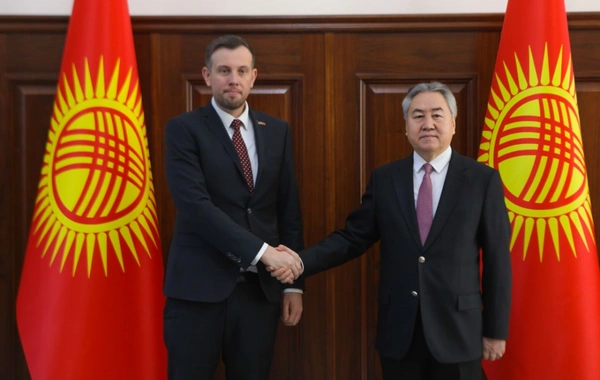
One of the primary drivers of the ruble’s depreciation is the surge in government spending to support objectives related to the Special Military Operation. This increase extends beyond defense procurement to encompass a broader array of economic initiatives.
Representational image (iStock photo)
Recent weeks have seen significant turbulence in the ruble's exchange rate, driven by a mix of fundamental and short-term factors. These dynamics reflect broader economic challenges and the enduring impact of sanctions, underscoring the complex environment in which Russia’s financial system operates, The Caspian Post reports.
Structural Weaknesses Behind the Ruble’s Decline
One of the primary drivers of the ruble’s depreciation is the surge in government spending to support objectives related to the Special Military Operation. This increase extends beyond defense procurement to encompass a broader array of economic initiatives. Significant resources are being directed toward import substitution, expanding production capacities in the defense sector, and raising wages across the national economy amid record-high employment levels. While such measures provide short-term economic stability, the accompanying liquidity injection creates a "monetary overhang," which exerts downward pressure on the ruble.
Long-term structural issues also play a role, particularly the persistent sanctions imposed by Western nations. These sanctions have disrupted traditional business operations, increasing non-productive costs and indirectly weakening the ruble. Combined, these factors paint a picture of a currency under sustained pressure from both internal and external forces.
Sanctions and Their Ripple Effects
The sanctions on Gazprombank illustrate the disruptive potential of targeted economic measures. As one of Russia’s primary conduits for export-import transactions, Gazprombank played a key role in maintaining liquidity within the domestic financial system. The U.S.-led sanctions have partially blocked this channel, creating short-term complications.
However, Russia has demonstrated resilience in adapting to these constraints. Alternative settlement mechanisms are already emerging, as highlighted by Hungary’s ability to continue energy-related transactions with Russia. While sanctions undoubtedly introduce friction, their long-term effectiveness is mitigated by the adaptability of Russian financial institutions and businesses.
Central Bank Interventions: A Temporary Reprieve
In response to market volatility, the Central Bank of Russia recently halted foreign currency purchases, a move that has had immediate positive effects. By withdrawing as a major buyer of dollars and euros, the Central Bank eased demand-side pressures on these currencies, allowing the ruble to regain some ground.
This intervention has alleviated panic among market participants and bolstered the ruble’s value, with a 7% appreciation against the dollar in just a few days. Nevertheless, such measures are inherently short-term and cannot fully offset the deeper, structural challenges facing the ruble. Long-term stability will depend on addressing broader economic imbalances, including productivity and investment dynamics.
The Risk of Economic Overheating
As defense spending rises, concerns about potential overheating in the Russian economy are growing. While inflation traditionally acts as a moderating force by reducing investment activity, Russia's labor market currently shows signs of strain. Record-low unemployment and high demand for skilled labor have driven wages upward, creating inflationary pressures without corresponding gains in productivity.
Despite these concerns, the economy has not exhibited classic signs of overheating, such as an investment boom or a surge in large-scale private-sector projects. Instead, the primary challenge lies in aligning wage growth with productivity improvements, which is critical for long-term economic stability.
Impact on Living Standards and Inflation
The depreciation of the ruble naturally raises concerns about its impact on consumer prices and living standards. However, the government’s efforts to dedollarize the economy have softened the blow compared to previous crises in 1998, 2008, and 2014. Today, the Russian economy is less reliant on the dollar, reducing the inflationary impact of exchange rate fluctuations.
While some inflationary pressures are expected, they will likely stem from speculative activity and risk hedging by private businesses rather than systemic issues. The overall effect on living standards is expected to be moderate, though it will require continued vigilance from policymakers to prevent undue strain on households.
Looking Ahead: Stability or Further Turbulence?
The ruble’s future will largely depend on the interplay of structural reforms, fiscal discipline, and external factors. A return to an exchange rate of 100 rubles per dollar appears likely in the near term, providing a semblance of stability. However, sustaining this stability will require addressing deeper economic issues, including productivity growth and diversification away from over-reliance on resource exports.
Ultimately, the ruble’s trajectory reflects the broader challenges facing the Russian economy: navigating the dual pressures of geopolitical conflict and domestic reform. While short-term measures can provide relief, only comprehensive, long-term strategies will ensure resilience in an increasingly uncertain global landscape.
This analysis underscores the critical need for adaptive policymaking and a focus on sustainable economic growth to shield the ruble—and the Russian economy—from future shocks.
Share on social media





One of the primary drivers of the ruble’s depreciation is the surge in government spending to support objectives related to the Special Military Operation. This increase extends beyond defense procurement to encompass a broader array of economic initiatives.